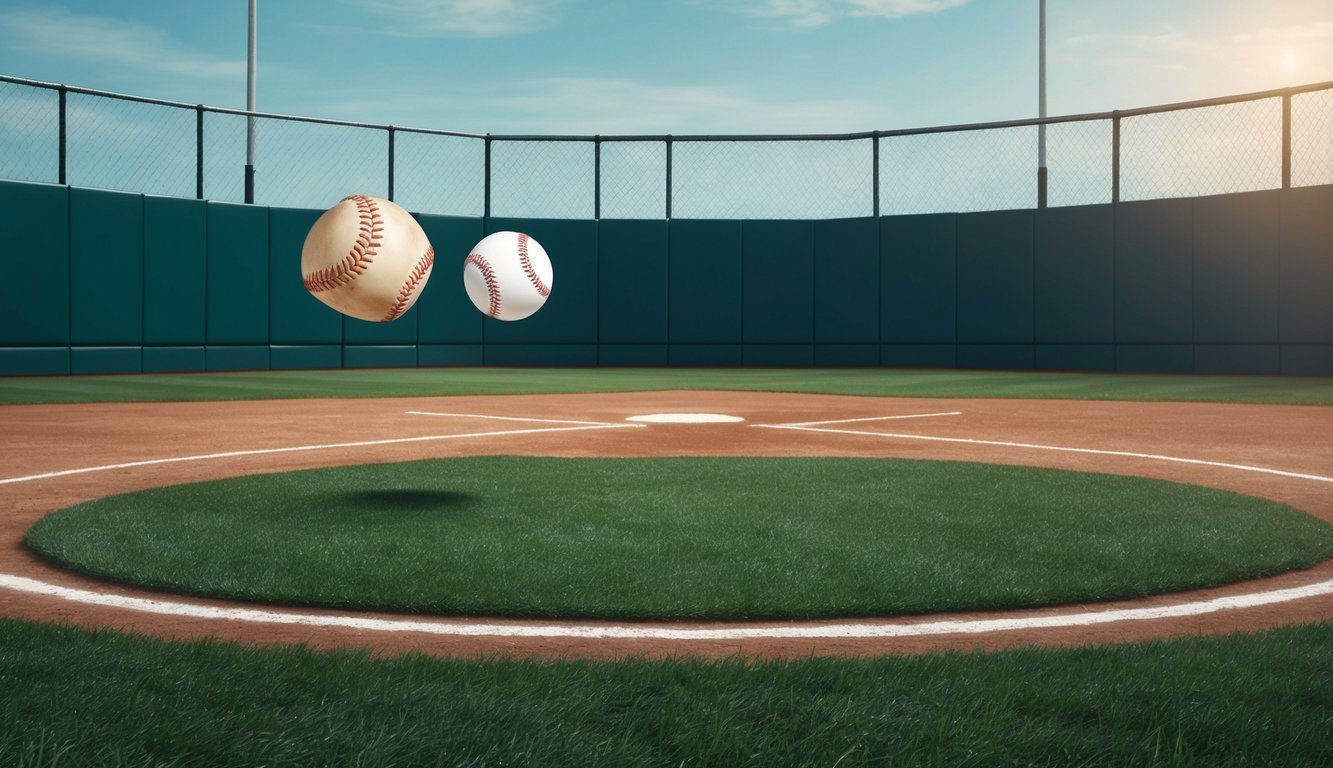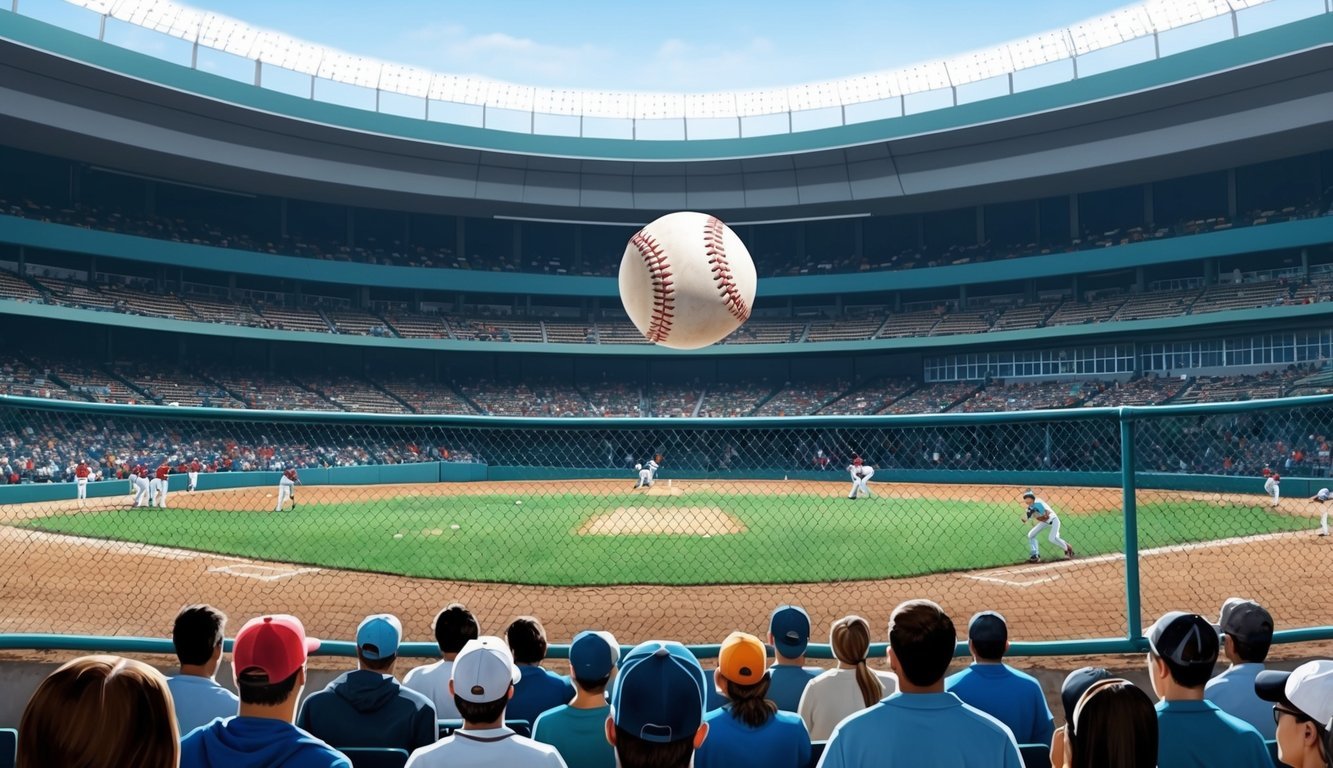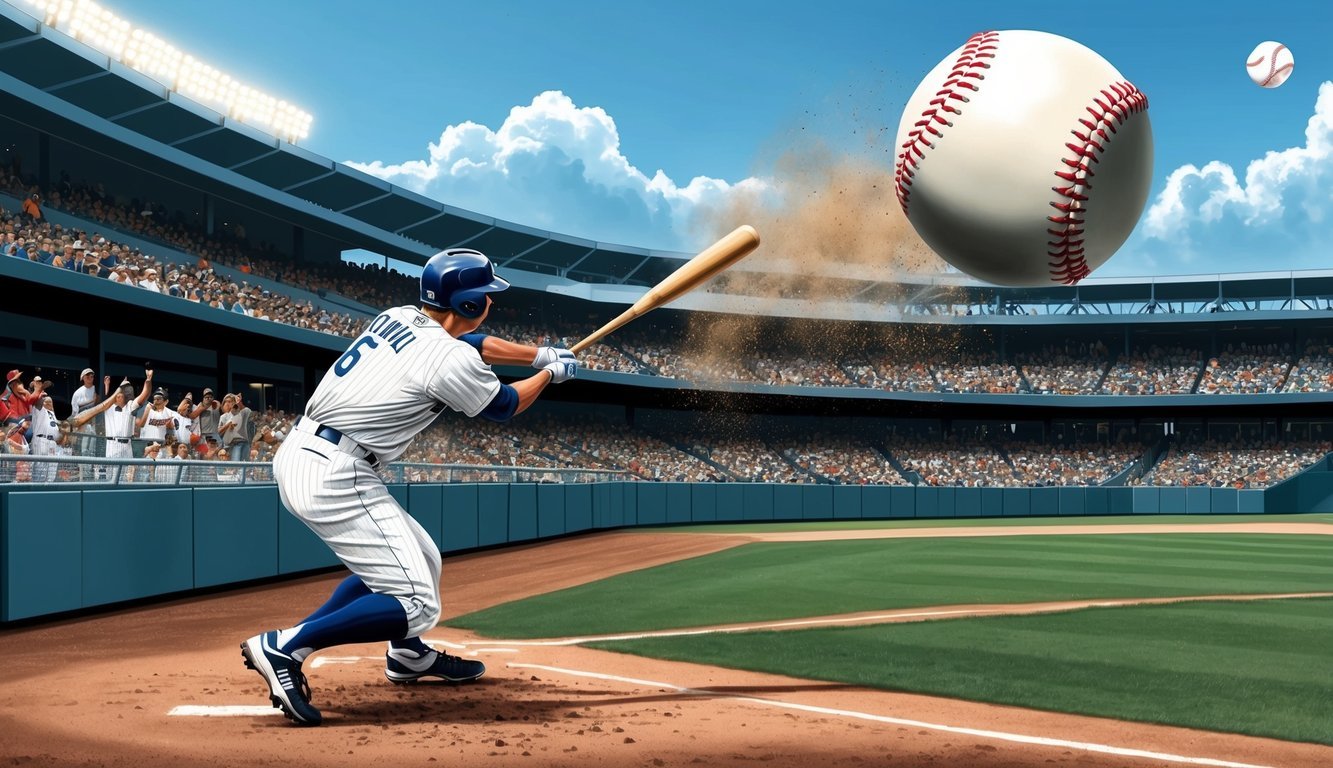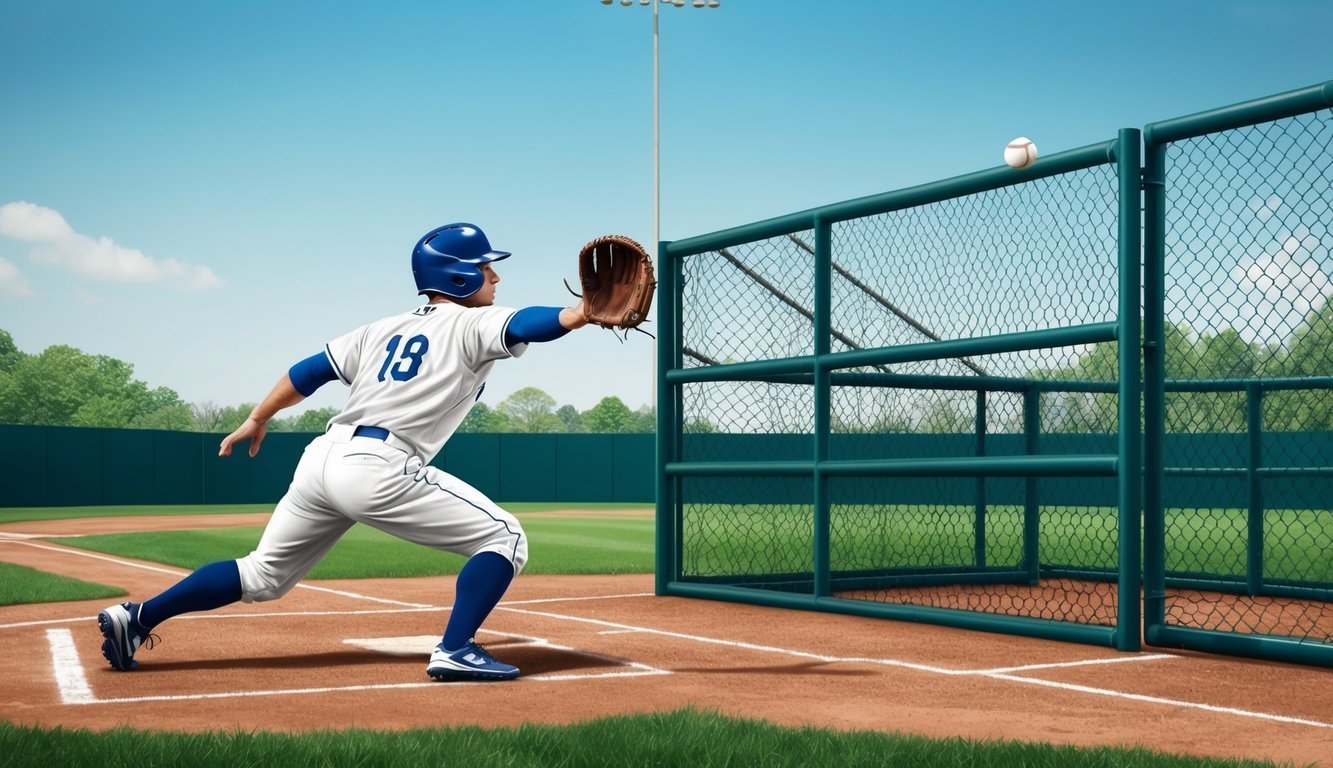Baseball fans know the familiar crack of the bat and the crowd’s collective gasp when a ball soars into foul territory.
A foul ball is an integral part of America’s favorite pastime, adding suspense and strategy to every at-bat.
A foul ball occurs when a batter hits the ball outside the foul lines or it lands in foul territory before reaching first or third base. This common occurrence can benefit both the offense and defense, depending on the situation.
For batters, foul balls offer a chance to stay alive in the count, while pitchers may use them to their advantage by racking up strikes.
Foul balls create exciting moments for spectators too.
Catching one is a cherished baseball memory for many fans.
Some even bring gloves to the game, hoping for their chance to snag a souvenir.
Whether you’re a player or a fan, understanding foul balls enhances your appreciation of the game’s nuances and complexities.
Basics of a Foul Ball
A foul ball is a crucial element in baseball that affects gameplay and strategy.
It occurs when a batter hits the ball outside the designated fair territory on the field.
Definition and Characteristics
A foul ball happens when a batted ball lands in foul territory without being touched by a fielder in fair territory.
It can also occur if the ball first touches the ground in foul territory beyond first or third base.
Foul balls count as strikes, except when a batter already has two strikes.
In that case, the count remains unchanged.
Foul tips are a special type of foul ball.
These occur when the ball goes directly from the bat to the catcher’s glove and is caught.
Unlike regular foul balls, foul tips are always considered strikes.
Foul Territory and Boundaries
Foul territory is the area outside the foul lines on a baseball field.
The foul lines extend from home plate through first and third base and all the way to the outfield fence.
These lines are considered part of fair territory.
Foul poles, located at the ends of the foul lines in the outfield, help umpires determine if fly balls are fair or foul.
Any ball that hits the foul pole is considered a fair ball and a home run if it clears the fence.
The area behind home plate is also foul territory.
Balls that land here without being caught are always foul, regardless of where they first touch the ground.
The Role of Players and Officials
Players and officials each have crucial responsibilities when it comes to foul balls.
Their actions and decisions shape the outcome of these plays.
Batter and Runner Interaction
The batter must be aware of where the ball lands after making contact.
If it’s a foul ball, they return to the batter’s box.
Runners need to stay alert too.
They can’t advance on a foul ball that isn’t caught, but they can tag up and run if a fielder catches a foul fly ball.
Batters should hustle out of the box on any hit, as a ball that starts foul might spin fair.
This quick action could mean the difference between a base hit and an out.
Fielders’ Responsibilities
Fielders play a key role in foul ball situations.
They must quickly judge whether to attempt a catch or let the ball drop.
Catching a foul ball results in an out, while letting it fall gives the batter another chance.
Infielders often chase foul popups, sometimes making spectacular plays near dugouts or stands.
Outfielders might have to run long distances to snag foul flies near the foul poles.
The catcher has a unique job, often having to navigate the backstop area for foul tips and popups.
Umpires’ Judgments
Umpires make the crucial fair or foul calls.
They position themselves to get the best view of where the ball lands or is first touched.
For close calls along the lines, they watch for chalk dust kicked up by the ball.
On fly balls near the foul poles, umpires must determine if the ball passes inside or outside the pole.
These decisions can be challenging, especially on high hits.
Umpires also rule on whether a caught foul ball is a legal catch, considering factors like player position and interference from fans or objects.
Foul Ball Rules and Regulations

Foul balls play a crucial role in baseball, affecting both offense and defense.
Understanding the rules surrounding these hits is essential for players and fans alike.
Strikes and Balls Count
Foul balls count as strikes, but with a key exception.
When a batter has less than two strikes, a foul ball adds a strike to their count.
However, a foul ball cannot result in a strikeout.
This means a batter can hit an unlimited number of foul balls with two strikes without being called out.
For pitchers, foul balls can be both helpful and frustrating.
They increase the strike count, potentially leading to a strikeout.
But they also allow batters to stay alive in the at-bat, possibly tiring out the pitcher.
Dead Ball Situations
When a foul ball occurs, it results in a dead ball situation.
This means play stops immediately, and runners cannot advance.
The ball becomes live again when the umpire puts it back in play.
Foul territory includes areas outside the foul lines and beyond first or third base.
Any batted ball that first lands in foul territory is considered a foul ball.
However, the foul lines themselves are in fair territory.
A ball that hits fair territory and then bounces into foul territory before reaching first or third base is also considered foul.
Special Cases: Foul Tips and Bunts
Foul tips are unique in baseball rules.
A foul tip is a pitched ball that goes sharply from the bat to the catcher’s hands and is caught.
Unlike regular foul balls, foul tips are considered strikes and can result in a strikeout if it’s the third strike.
Bunts present another special case.
A bunted ball that goes foul is treated like any other foul ball, adding a strike to the count.
However, if a batter bunts foul with two strikes, it’s ruled a strikeout.
This rule prevents batters from repeatedly bunting with two strikes to prolong an at-bat.
It adds strategy to the game, as batters must be more cautious when attempting to bunt with two strikes.
Strategies Involving Foul Balls

Foul balls play a crucial role in baseball strategy, impacting both offense and defense.
Players and coaches utilize these seemingly inconsequential hits to gain advantages during at-bats and defensive plays.
Offensive Tactics
Batters often intentionally hit foul balls to extend their at-bats.
This tactic can help tire out pitchers, forcing them to throw more pitches.
A skilled batter might foul off several pitches until they get one they can hit solidly.
Some players use foul balls to gather information about the pitcher’s strategy.
By watching how the ball moves, they can better predict future pitches.
In certain situations, batters might try to bunt foul with two strikes.
This risky move can pay off if they successfully bunt the next pitch fair, advancing runners or reaching base themselves.
Foul balls can also disrupt a pitcher’s rhythm.
Consecutive fouls might frustrate or distract the pitcher, potentially leading to mistakes in subsequent pitches.
Defensive Approaches
Defensively, teams adjust their positioning based on a batter’s tendency to hit foul balls.
Infielders and outfielders might shift slightly to better cover foul territory.
Catchers play a key role in foul ball strategy.
They’re often tasked with chasing down foul pop-ups, potentially ending an at-bat with a catch.
Pitchers sometimes use foul balls to their advantage.
They might intentionally throw pitches that are difficult to hit fair, hoping to induce weak contact or foul balls.
Teams also consider foul territory when designing their ballparks.
Stadiums with more foul ground can benefit the defensive team, providing more opportunities for outs on foul fly balls.
Coaches often instruct fielders on the best ways to handle foul balls.
This includes deciding when to attempt a catch and when to let the ball drop, depending on the game situation and score.
Historical Significance and Memorable Moments

Foul balls have played a fascinating role in baseball history, creating unforgettable moments and shaping the game’s statistical landscape.
From early rule changes to improbable catches, these seemingly minor occurrences have left a lasting impact on America’s pastime.
Historic Foul Balls
Ross Barnes hit the first recorded foul ball in the 19th century, sparking debates about fair and foul territory.
This led to rule changes that helped define modern baseball.
In 2003, the Steve Bartman incident became one of the most infamous foul ball moments.
During Game 6 of the National League Championship Series, Bartman’s attempt to catch a foul ball interfered with Cubs outfielder Moises Alou, potentially altering the game’s outcome.
Another memorable foul occurred in 1976 when Yankees catcher Thurman Munson caught a popup while tumbling into the dugout.
This spectacular play showcased the athleticism and determination of players in pursuit of foul balls.
Probability and Statistics
Foul balls occur frequently in baseball, with an average of 30-40 per game.
The probability of a fan catching a foul ball varies depending on seating location and attendance.
Seats behind home plate and along the baselines offer the highest chances.
Fans have the best chance of catching a foul ball if they sit behind home plate or along the baselines.
Statistically, foul balls impact pitcher performance.
A batter who fouls off multiple pitches can wear down a pitcher, potentially leading to walks or hits.
This strategy is often employed by skilled hitters to gain an advantage.
Some players have turned foul balls into fair ones.
Vladimir Guerrero Sr. was known for his ability to hit “bad ball” home runs, occasionally connecting with pitches that were nearly in the dirt or far outside the strike zone.
